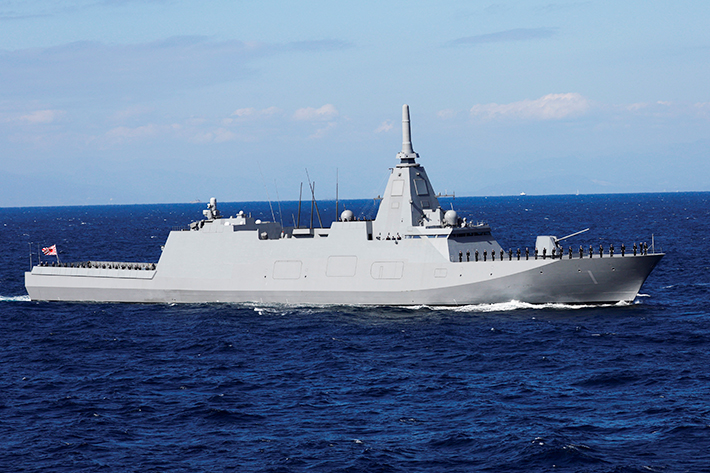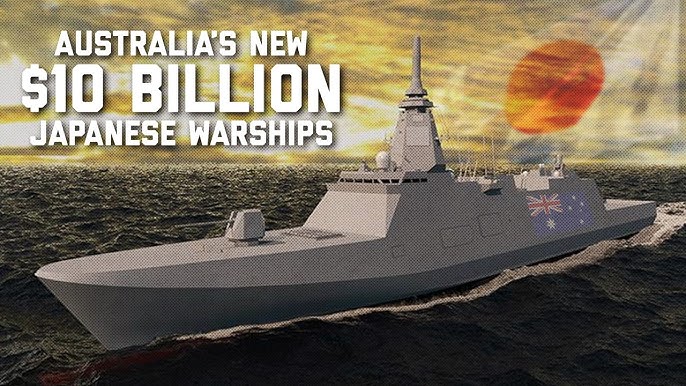
The strategic landscape of the Indo-Pacific has entered a transformative period, marked by a landmark defense agreement between two key U.S. allies. Australia recently announced a significant $6.5 billion deal to procure advanced warships from Japan, a move set to redefine Canberra’s naval capabilities and elevate Tokyo’s standing as a major global weapons exporter. This unprecedented transaction not only signals a profound adjustment in the security architecture of the Asia-Pacific region but also underscores the deepening military cooperation among like-minded nations in response to evolving geopolitical realities.
At the heart of this historic deal are Japan’s Mogami-class frigates, eleven of which Australia is set to acquire. Described by the Australian Defense Ministry as “stealthy, state-of-the-art surface combatants,” these vessels are widely considered by analysts to be equal to, or in some respects superior to, anything currently deployed the United States. Built by Mitsubishi Heavy Industries, these frigates represent the pinnacle of modern naval engineering, poised to significantly enhance Australia’s maritime power.

A formidable array of weaponry defines the Mogami-class frigates. Each new warship will be equipped with 32 Mk 41 vertical launch cells, capable of firing both surface-to-air and anti-ship missiles. This impressive capacity means the Mogamis can deploy up to 128 air defense missiles, a substantial four-fold increase over the current missile capacity of existing Australian surface vessels, as highlighted by Australia’s Minister for Defense Industry Pat Conroy.
Adding to their strategic value, these Lockheed Martin-made Mk 41 launch cells are versatile enough to accommodate Tomahawk cruise missiles. With a formidable range of 1,000 miles, these missiles could dramatically expand the warships’ target area, projecting power far beyond current capabilities. Furthermore, the cells can be utilized for long-range anti-submarine rockets, enabling superior tracking and engagement of elusive nuclear-powered submarines, a critical capability according to Sidharth Kaushal, a research fellow in sea power at the Royal United Services Institute (RUSI) in London.

Beyond sheer firepower, the Japanese-made frigates are celebrated for their exceptional operational efficiency, particularly their lean manning requirements. Needing a crew of just 90 personnel, they stand in stark contrast to Australia’s current ANZAC-class frigates, which typically require 170 crew members. This reduced crew size is a vital advantage for nations like Japan and Australia, which are grappling with military recruiting challenges, making the Mogami class a truly modern solution as articulated by Australian Deputy Prime Minister Richard Marles.
Indeed, analysts have praised Australia’s judicious decision to select the Japanese design over a competing German frigate, recognizing the Mogami class’s superior qualities. Alessio Patalano, a professor of war and strategy in East Asia at King’s College, London, lauded its “stealth, its reduced manning, its modularity – all at a relatively affordable price – make it an incredibly competitive product.”
The new vessels, described as “upgraded” Mogami-class ships, will be larger than the version already in service with Japan’s Maritime Self-Defense Force, granting them enhanced firepower and an impressive unrefueled range of approximately 11,500 miles, nearly half the length of the equator.
This procurement is part of a much broader and ambitious defense investment by Canberra, aimed at delivering a “much larger and more lethal navy.” The Australian government’s commitment aligns with the findings of the Defense Strategy Review (DSR) 2023, which painted a stark picture of the country’s naval capabilities and called for a significant upgrade. The DSR’s Independent Analysis Team recommended a fleet composition of nine Tier-1 warships and eleven Tier-2 general-purpose frigates, a strategic pivot from the previous plan.
Building on these recommendations, Australia unveiled a ten-year plan in February to double its major warship fleet from 11 to 26 vessels, backed by an additional US$11.1 billion in defense spending. This ambitious undertaking, hailed by Defense Minister Richard Marles as “the largest fleet that we will have since the end of the Second World War,” is aimed at projecting power more effectively across the contested Indo-Pacific. Analysts are already labeling this sweeping naval modernization as “Australia’s naval renaissance.”

For Japan, this deal represents a truly monumental step in its evolving defense policy. For most of the post-World War II era, Japan maintained a strict ban on the export of weaponry, a foundational element of its pacifist constitution. However, in recent years, this policy has been gradually relaxed, initially permitting the sale of items related to surveillance, reconnaissance, and rescue overseas, marking a cautious but deliberate shift in its stance.
This cautious approach began yielding tangible results in the past two years, with the Philippines becoming an early beneficiary by acquiring air surveillance radars from Japan. Last year, Japan took another significant step by selling its first lethal weaponry, Patriot missile interceptors, to the United States. These Patriots, built under license from Washington, were intended to replace those sent to Ukraine, showcasing Japan’s growing role in global defense supply chains.
However, the frigate sale to Australia dwarfs these previous transactions, signifying a profound turning point for Japan’s nascent defense export industry. As Alessio Patalano observed, successfully executing this deal “would catapult Japan in the space of major defense industry exporters.” This is not merely a commercial success; it is a strategic triumph that could reshape Japan’s international influence and security partnerships for decades to come.

From Tokyo’s perspective, the deal is a “big step” that will significantly bolster security cooperation with a “special strategic partner,” as articulated by Japan’s Defense Minister Gen Nakatani. Japanese government spokesman Yoshimasa Hayashi further underscored this sentiment, describing the agreement as “proof of trust in our nation’s high-level technology and the importance of interoperability between Japan’s self-defence forces and the Australian military.” This interoperability is a critical factor in forging stronger alliance networks.
Australia’s commitment to the Mogami class also reaffirms its “very close strategic alignment with Japan.” As fellow members of the U.S.-led Quad defense group, this collaboration strengthens a vital pillar of the Indo-Pacific’s security architecture. Minister Pat Conroy’s statement that the acquisition of these stealth frigates “will make our navy a bigger navy, and a more lethal navy” perfectly encapsulates Australia’s determination to enhance its defense posture through strategic partnerships.

This transaction, in its core logic, signifies a comprehensive upgrade of security cooperation that stretches far beyond conventional commercial boundaries. It represents a milestone for Japan’s gradual departure from its strict post-war “Peace Constitution,” especially through the ingenious “co-development” model where the first three frigates will be built in Japan and the remaining eight assembled in Australia. This arrangement not only facilitates technology transfer but also establishes a precedent for future exports, potentially paving the way for Japan’s transformation from a “self-defense” nation to a more influential “military power.”
Simultaneously, the deal can be interpreted as Australia’s nuanced attempt to “de-Americanize” certain aspects of its defense acquisitions, even while remaining a steadfast U.S. ally. By introducing advanced Japanese equipment and planning to test Japanese long-range missiles on its soil, Australia is seeking to build a more independent combat system, separate from the U.S. framework. Furthermore, the technology transfer inherent in the deal promises to significantly enhance Australia’s domestic shipbuilding capabilities and create thousands of jobs, fostering self-reliance.




